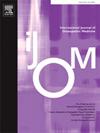整骨疗法及相关手法治疗改善神经系统疾病患者胃肠窘迫症状的综述
IF 1.5
4区 医学
Q2 MEDICINE, GENERAL & INTERNAL
引用次数: 0
摘要
目的探讨骨科手法治疗(OMT)及相关手法治疗在改善神经性疾病(ND)患者胃肠不适中的临床应用价值。方法通过PubMed、Embase、Scopus和Ovid检索数据库,确定随机和非随机临床试验,分析OMT和相关手工治疗对ND患者肠道健康的影响。两名独立审稿人筛选了纳入的文章,并提取了与参与者特征、干预细节、结果测量和重要结果相关的信息。采用标准质量评价标准对合格研究的方法学质量进行评价。结果共分析了12项研究(9项随机对照试验、2项前后试验和1项非随机对照试验)共516例ND患者。所有12项研究均显示OMT及相关治疗后胃肠道窘迫症状有所改善。研究结果可能受到方法可变性(即异质残疾类型、治疗方式)和语言排除的限制。结论OMT及相关治疗是改善便秘、腹痛等胃肠道不适症状的有效干预措施。未来的随机对照试验应该检查OMT的剂量反应和与这些治疗相关的微生物组变化。本文章由计算机程序翻译,如有差异,请以英文原文为准。
A review of osteopathic and related manipulative treatments for improving symptoms of gastrointestinal distress in neurological disorders
Objective
To determine the clinical utility of osteopathic manipulative treatments (OMT) and related manual therapies for improving gastrointestinal distress in patients with neurological disorders (ND).
Methods
A database search through PubMed, Embase, Scopus, and Ovid was conducted to identify randomized and non-randomized clinical trials that analyzed the effects of OMT and related manual therapies on gut health in patients with ND. Two independent reviewers screened articles for inclusion and extracted information related to participant characteristics, intervention details, outcome measures, and significant outcomes. Methodological quality of eligible studies was assessed using the Standard Quality Assessment Criteria.
Results
Twelve studies (nine randomized controlled trials, two pre-post trials, and one non-randomized controlled trial) with a total of 516 individuals with ND were analyzed. All twelve studies showed improvements in symptoms of gastrointestinal distress following OMT and related treatments. Findings may be limited by methodological variability (i.e., heterogenous disability types, treatment modalities) and language exclusions.
Conclusion
Evidence suggests that OMT and related treatments are effective interventions for improving symptoms of gastrointestinal distress like constipation and abdominal pain. Future randomized controlled trials should examine the dose-response of OMT and microbiome changes associated with these treatments.
求助全文
通过发布文献求助,成功后即可免费获取论文全文。
去求助
来源期刊
CiteScore
2.20
自引率
36.80%
发文量
42
审稿时长
3 months
期刊介绍:
The International Journal of Osteopathic Medicine is a peer-reviewed journal that provides for the publication of high quality research articles and review papers that are as broad as the many disciplines that influence and underpin the principles and practice of osteopathic medicine. Particular emphasis is given to basic science research, clinical epidemiology and health social science in relation to osteopathy and neuromusculoskeletal medicine.
The Editorial Board encourages submission of articles based on both quantitative and qualitative research designs. The Editorial Board also aims to provide a forum for discourse and debate on any aspect of osteopathy and neuromusculoskeletal medicine with the aim of critically evaluating existing practices in regard to the diagnosis, treatment and management of patients with neuromusculoskeletal disorders and somatic dysfunction. All manuscripts submitted to the IJOM are subject to a blinded review process. The categories currently available for publication include reports of original research, review papers, commentaries and articles related to clinical practice, including case reports. Further details can be found in the IJOM Instructions for Authors. Manuscripts are accepted for publication with the understanding that no substantial part has been, or will be published elsewhere.

 求助内容:
求助内容: 应助结果提醒方式:
应助结果提醒方式:


